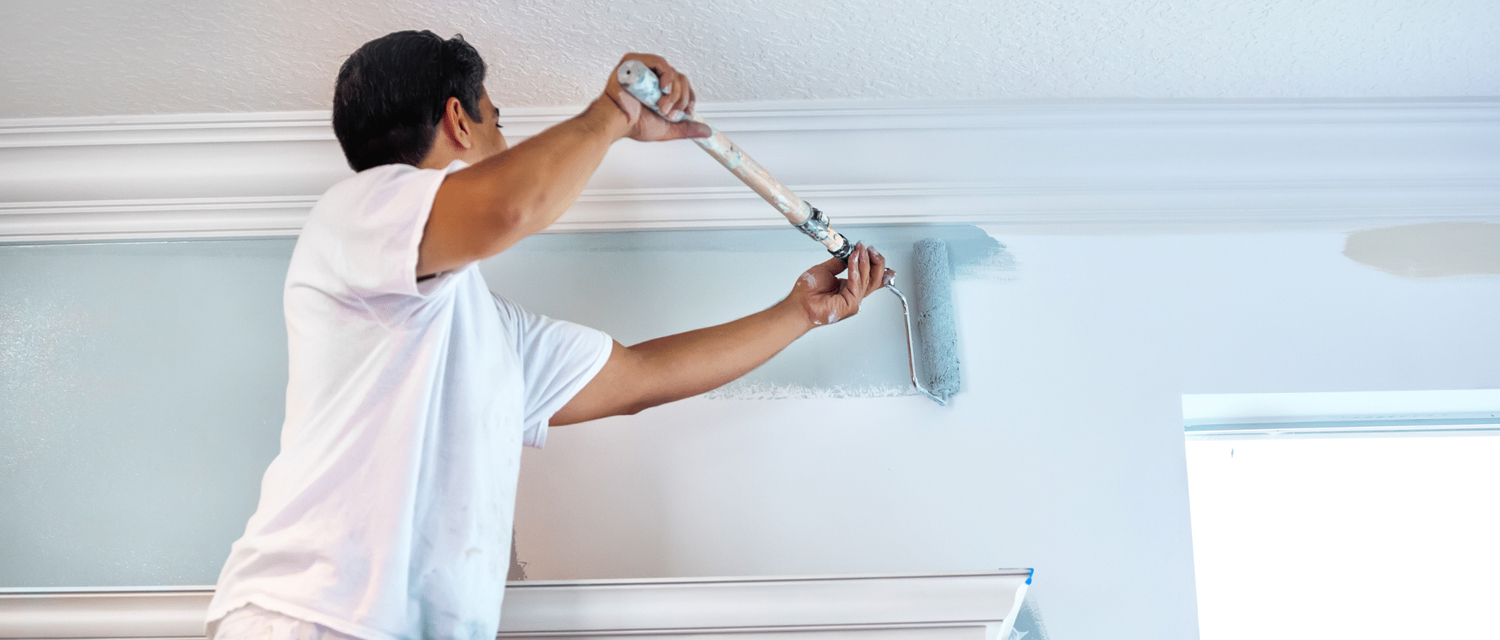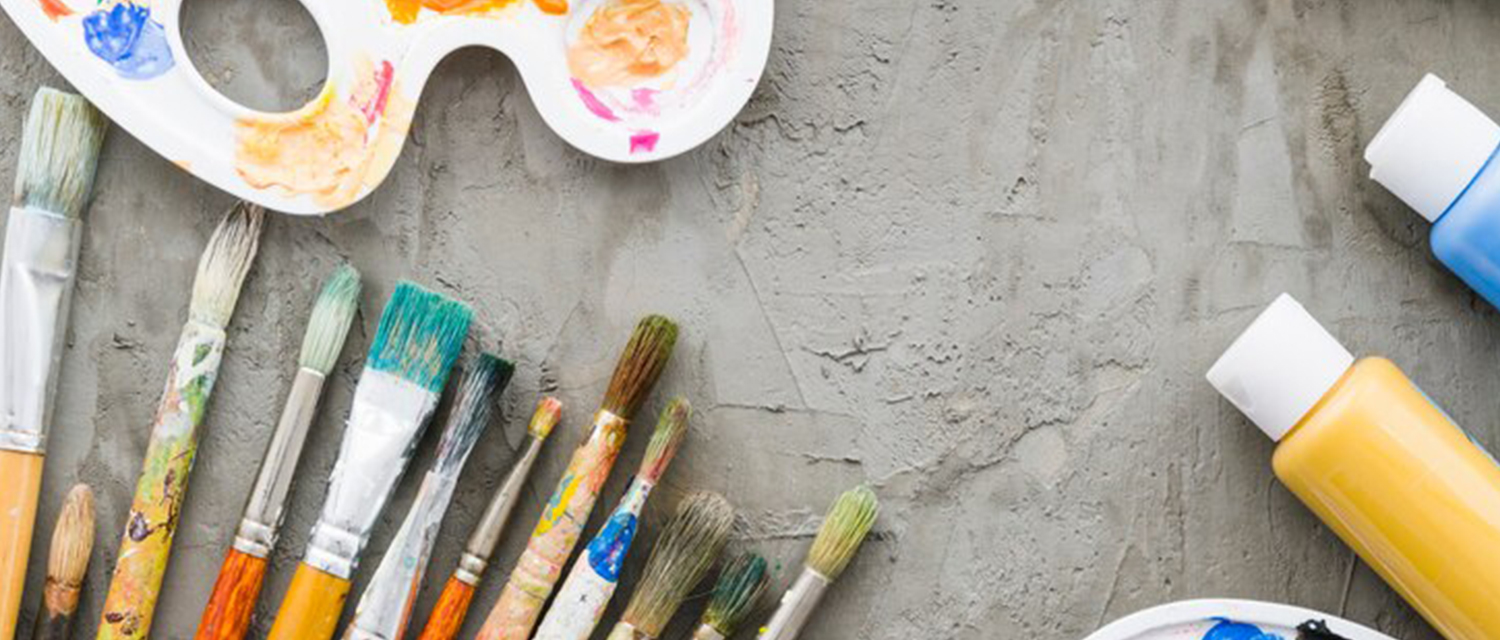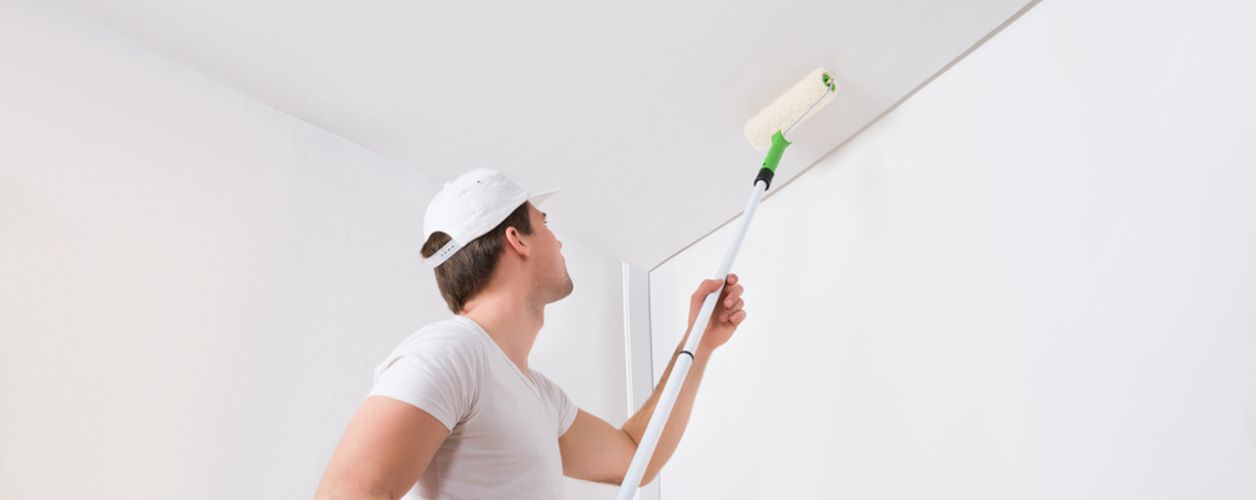Get free quotes within minutes
How to Paint a House Interior?

Table Of Content
- Introduction
- How To Paint A House Interior?
- 8 Painting Designs That Can Make Your House Interior Beautiful
- Accent Walls
- Stripes And Patterns
- Ombre Walls
- Colour Blocking
- Decorative Borders
- Metallic Finishes
- Stencils and Murals
- Faux Finishes
- Types Of Faux Finishes
- Colour Preferences For Creative House Interior Painting
- Conclusion
Looking to design your walls to make them more attentive for guests and family members? Or you are tired of looking at your boring walls daily? Changing your interior space with creative painting ideas will be the best option. Your interior designs reflect your personality and interests. Transform your house by painting the interior with some creative ideas. There are endless ideas. Do you know the painter’s charge per hour? Whether you are looking to repaint your room or change your entire home’s interior by painting the walls. You can add colours, designs and patterns according to your choice. It will not only enhance the look of your house but will also add more value. To enhance your house look, you can choose the best one from the 8 ideas we have shared for interior house painting
House Interior Painting Steps: How To Proceed?
Painting the interior of your house can be a rewarding DIY project if done correctly. Here are the steps to ensure a professional-looking finish:
1. Preparation And Gathering Supplies
- Paint (primer and topcoat)
- Paintbrushes and rollers
- Painter's tape
- Drop cloths or plastic sheeting
- Sandpaper
- Putty knife and spackling paste
- Paint tray
- Ladder
- Stir sticks
- Paint can opener
Clear and Protect the Area
- Move furniture out of the room or to the centre and cover it with drop cloths.
- Cover floors with drop cloths or plastic sheeting.
- Remove or cover light fixtures, switch plates, and outlet covers.
Repair and Clean Walls
- Fill holes and cracks with spackling paste; let dry and sand smooth.
- Clean walls with a damp cloth to remove dust and dirt.
2. Priming
a. Choose the Right Primer
- Use a primer suitable for your wall type and the paint colour you're using.
b. Apply Primer
- Cut in edges with a brush.
- Use a roller for large areas, applying the primer in a W pattern for even coverage.
- Allow the primer to dry completely.
3. Painting
a. Select Your Paint
- Choose a high-quality interior paint in your desired colour and finish (matte, eggshell, satin, semi-gloss, or gloss).
b. Cutting In
- Use a brush to paint around edges, corners, and trim. This technique helps create a clean line and prevents the roller from touching areas where it shouldn't.
c. Rolling the Paint
- Pour paint into a tray.
- Load the roller with paint, rolling it back and forth to evenly distribute the paint.
- Apply paint in a W pattern to avoid streaks and ensure even coverage.
- Work in small sections, blending each section while the paint is still wet.
4. Second Coat
- Allow the first coat to dry completely.
- Apply a second coat of paint following the same technique as the first for a consistent, durable finish.
- You can check the area if there is a need for a third coating. In most cases, the second coat can make the surface painted well.
5. Touch-ups and Cleanup
a. Inspect and Touch Up
- Check for any missed spots or uneven areas and touch up as needed.
- Remove painter's tape carefully before the paint fully dries to avoid peeling.
b. Clean Up
- Wash brushes and rollers with soap and water (latex paint) or the appropriate solvent (oil-based paint).
- Dispose of or store leftover paint properly.
6. Finishing
- Reattach light fixtures, switch plates, and outlet covers.
- Move furniture back into place once the paint is fully dry.
Check the cost of painting a house to know further details about roof painting cost, interior painting cost and exterior painting cost.
8 Painting Designs That Can Make Your House Interior Beautiful
Painting the interior of your house can refresh and transform your living space. If you want interior house painting design choices, here we are with the top 8 ideas.
1. Accent Walls
The accent wall is a single wall of a different colour from other walls. It highlights the special feature of your room where you want to give attention to objects on a single wall. It is suitable for the living room where it can highlight the wall of your TV or LCD areas. So, give it a new or different look from other walls. Ensure that the other walls you are painting will be completely neutral or of the same colour.
2. Stripes And Patterns
Stripes and patterns give a look of visual interest to your interior designs. It is also can suit your living area. You can make your bedroom more adventurous by adding bold patterns into stripes. Add a combination of different colours to these stripes and patterns according to your interest. Also, use the colours that complement each other in these patterns. Using these patterns backside areas of your sofa and couch will make a more decent and attractive look. First, decide on the pattern you want such as horizontal or vertical stripes or geometric patterns. Mark the patterns on the wall and paint them with desired colours. Use painter’s tape on the borders to give a fine and neat look.
3. Ombre Walls
Ombre walls are a gradient effect of the same colour from a light shade to a dark shade. It adds a unique and elegant touch to the wall. It gives satisfaction and peace to the environment. You can use this in your rest areas. To achieve an ombre effect, choose two or more colours of different shades from the same family. Always start with a basic colour and go to the bold or dark shade of the colour. Use a brush to blend the colours. It gives a modern look to the walls. Choose a high-quality paint for this effect, so that light shades do not fade out with time.
4. Colour Blocking
Colour blocking involves the combination of solid blocks of contrast and complementary colours. This pattern gives a vibrant effect to rooms. It can transform dull spaces into lively and modern styles. You can complement the colours of blocks to your existing furniture. Both light and dark colours can be used in this pattern. To paint this pattern, decide the areas you want to paint and the size of the blocks you want. Large blocks on a wall or multiple small-sized blocks can be used. Use a painter’s tape to achieve a neat look of blocks.
5 Decorative Borders
Decorative borders are classical design elements that are used in a particular wall to define a particular space. These borders can be applied to the ceiling to enhance the aesthetic of the room. The design and colour of the borders can be modified according to the interest. These designs are so versatile. To paint this pattern, choose the border design that compliments your room decor. Draw the temporary outline of the border and design it according to your choice. Use a small brush for fine designs and borders to give a finished look.
6. Metallic Finishes
Mettalic ideas have reflective qualities that give a luxury touch to your rooms. They are design elements that transform the room with their shimmering effects. Buy a metallic paint as per your choice. Apply a base coat of the colour you have chosen to ensure an even coverage. For a smoother effect, use a roller to paint these metallic designs.
7. Stencils and Murals
Stencils and murals are creative techniques that give a visualized fair and personalized experience. You can use both bold and light colours as per your choice and customize the design according to your interests. These ideas can be used in kids' rooms to give them a creative environment. A variety of colours is used here. In stencils, we often use an application of patterns ranging from geometric shapes to floral designs. They can be used to design a part of the wall. You can use them to highlight a specific area with creativity.
Stencils are easy to make. Take a stencil structure, paste it on a wall and colour it with the desired paint. In murals, we used to art the entire wall. It can be the painting of a specific character or a themed design. They are not that easy to make as a stencil. For a specific character, sketch the character and refine it until you are satisfied. Use high-quality acrylic paint for vibrant colours. There is a need for a variety of brushes to paint the art. You can also use a projector to sketch design. A base coat is necessary to enhance the visual effect.
8. Faux Finishes
Faux finishes are decorative painting techniques that replicate the appearance of various materials, such as marble, wood, stone, or fabric. These finishes can add texture, depth and visual interest to your walls. To paint this design, sponges will also be needed in addition to brushes and rollers. Apply a clear sealant or varnish over the finished surface to protect it from damage and enhance its longevity.
Types Of Faux Finishes
- Marbling: This technique mimics the luxurious look of marble by creating veined patterns in varying shades of colour. It adds an elegant and sophisticated touch to the walls.
- Wood Graining: Wood graining techniques replicate the natural patterns and textures of wood. This is ideal for creating a rustic, warm ambience in your home.
- Venetian Plaster: Venetian plaster involves applying and burnishing multiple thin layers of plaster to achieve a smooth and polished surface.
- Rag Rolling: This technique uses the rolling of a rag over the painted surface. It creates a soft and dynamic pattern on walls.
- Sponging: Here is the use of a sponge to create faux finishes on the walls. The spongy effect creates a more visual appearance with a smooth texture.
Colour Preferences For Creative House Interior Painting
- Soft Pastels: Use light lavender, blush pink, and mint green as well as other pastel colours. So, you can create a quiet and calm ambience.
- Bright Blues: Vibrant blue hues, from electric azure to deep navy, can enliven your area & offer depth and refinement.
- Warm Neutrals: Choose earthy colours like warm grey, taupe, and beige to create a comfortable and welcoming atmosphere.
- Exquisite Jewel Tone: For a hint of extravagance, choose rich jewel tones. For example, you can go with ruby red, sapphire blue, and emerald green to create a statement.
- Single-tone Schemes: To create a contemporary style, use multiple tones of the same colour, such as different greys or blues.
- Earth Tone Mutes: Use earthy tones like terracotta, olive green, and sandy browns to create a peaceful, natural atmosphere.
- Contrasting Accents: To create interest and vitality, combine bright accent colours like burnt orange, teal, & mustard yellow with neutral walls.
- Black and white: Adopt the timeless sophistication of black and white for an interior design; that is elegant, ageless, & visually arresting.
Conclusion
Painting the interior of your house offers endless possibilities for creativity and personal expression. Whether you’re adding a bold accent wall, dynamic stripes or an ombre effect. These ideas can help you achieve a unique and stunning look. Hire a home interior painter to make better decisions on designs and execute the painting work effectively. You can use a variety of ideas given above to make your room luxurious and attractive.













